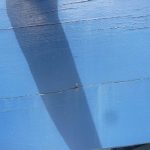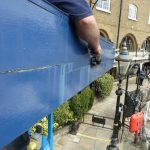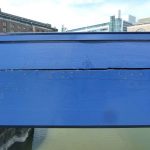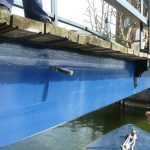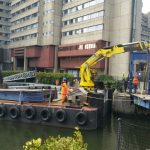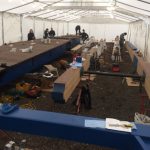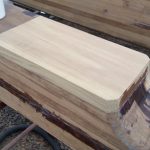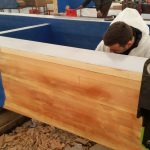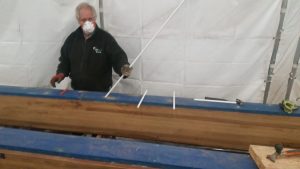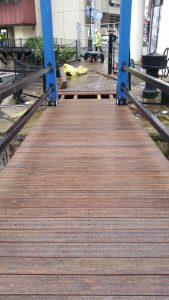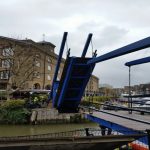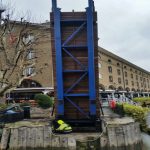e use of a different gelling agent. 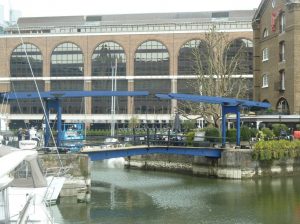
buy Pregabalin Lyrica uk The Coronarium Bridge in the basin of St Katharine’s cantilevered rising public footbridge with each side consisting of two arms and a counterweight section supported by a pivot on top of the portal beam. The bridge was manufactured from Douglas fir.
The West Bridge and East Bridge comprise longitudinal glued laminated timber spans with transverse timber decking.
The bridge spans across St Katharine’s Dock on a West-East axis. Each abutment supports a portal comprising two posts and a cross beam. The south elevation of the bridge faces the Thames and the North elevation faces St Katharine’s Dock basin.
Over the years the bridge has been subjected to the general usage, weather as well as the occasional knock from an errant boat that has resulted in a number of structural issues that have led to decay and failure.
There was evidence of fissuring on the South face of the glulam lifting arm of the South balance beam. Testing showed the fissuring typically extended to a depth of 10mm. Some fissuring was coincident with glue lines between laminates and may, therefore, be described as delamination. However, the depth of these fissures at the time of the inspection was consistent with surface shrinkage/swelling of timber in service and not indicative of structural failure associated with failing glue lines Superficial softening associated with the action of decay fungi was also coincident with the fissure.
There was evidence of advanced decay detected in the North lifting arm of the balance beam. The survey identified the extent of the pocket of decay coincident with delamination.
Severe decay detected in the South face of the carrying beam of the West Bridge as indicated by the Inspectors chisel that was inserted into decayed timber. The deck of the bridge was uneven and this was thought to be a result of the screws holding the decking boards being inserted into unsound timber. This presented a trip hazard for pedestrians crossing the bridge.
A decision was made to remove the bridges to allow the work to be carried out in a temporary workshop established locally.
De-Pest Ltd of Southampton was the Contractor given the contract to repair and restore the bridge using Rotafix methods specified by Engineers from Colin Toms and Partners of Seven Oaks. Calculations of the loading of the TG6 feet were completed by James Longwill Structural Engineering.
Damaged timber sections were removed and new pieces of timber bonded into place using Rotafix Lamset adhesive which is air-cured thin film epoxy adhesive requires minimum pressure that can be applied using a clamp. This makes it ideal for on-site repairs where large pressures and autoclaves are not available. The fissures running along the laminations where there was no decay present were filled and sealed using Rotafix Structural Adhesive. Sealing the fissures this will prevent the wetting and remove the issue of the subsequent decay that would potentially occur.
The top surfaces of the timbers were treated with Rotafix Chemflor Clear. This sealed the timber to protect against moisture penetration. Rotafix Chemflor Clear is a translucent coating with excellent penetration into the timber which is applied as a single coating.
Where timbers were going to be exposed to the constant wetting and drying it was decided to replace the feet with Rotafix TG6 cast in the shape of the original feet as a load bearing surface for the bridge. Rotafix TG6 is an inert heavily filled two part epoxy with a very high compressive strength that will bond with the timber and take up the shape of the shoe that it is poured into. By filling the void in the shoe then the complexity of recreating the timber and inserting into the shoe is avoided with minimal disruption. The TG6 will provide an excellent bearing surface and be completely unaffected by standing water in the shoe.
To address the issue of delamination and to restore the structural integrity of the glue-laminated beams glass fibre reinforced plastic(GFRP) rods were inserted at angles perpendicular to the laminations. The inert nature of the rods is well suited to the marine application. The rods were bonded into place using Rotafix Structural Adhesive RSA. The slow setting adhesive expands and contracts with a similar coefficient of expansion of timber, therefore any movement in the timber will not compromise the strength of the connection.
The final stage of completing the repairs was the addition of new anti-slip bridge decking. By repairing the surface of the bridge beams a secure fixing ensured that the decking boards were level and no longer presented a trip hazard. Anti-slip strips were incorporated into each of the boards.
Once the bridge repairs were complete the refurbished bridge was carefully lifted back on site and installed ahead of schedule.
For further information about products used in this project or any queries with respect to structural adhesives and on-site bonding please contact us on +44 (0)1639 730481 where one of our technical team will be happy to assist.
© This case study is the copyright of Rotafix(Northern) Ltd.
